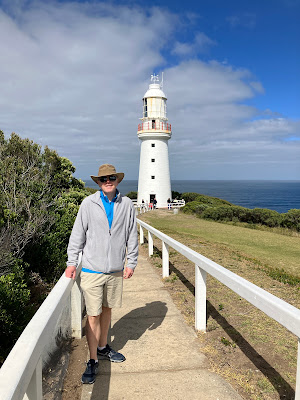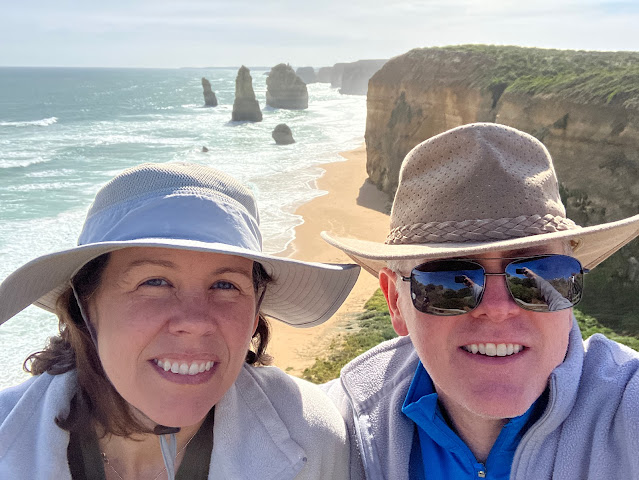The section of the Great Ocean Road from Apollo Bay to Port Campbell should really be called “The Great Rainforest Road” because it veers away from the coast and winds inland, into Great Otway National Park.
We enjoyed the forest walk at Maits Rest, one of the few pristine/unlogged stands of Cool Temperate Rainforest left in the Otways.
Everything here is damp with moisture and covered in green moss. The towering myrtle beech trees can live for 300 years and grow to a height of 150 feet. These trees provide a canopy for the tree ferns below and the air is filled with the earthy scent of constantly growing and decaying undergrowth.
We took a brief break from the rainforest to head back to the coast and tour the Cape Otway Lightstation (I did promise there would be multiple lighthouses in this post!) This is the most significant lighthouse in Australia. Built in 1848 it was the first beacon of welcome for many immigrants who came to Australia in the late 19th century.
This area where Bass Strait meets the Southern Ocean was particularly treacherous and many vessels were shipwrecked here.
In addition to the lighthouse there was also a cottage for the lighthouse keeper that is now a museum. Here’s Kevin checking to see if the hundred-year-old mattress is more comfortable than the one at the dive motel we stayed at last night in Apollo Bay.
We climbed the seemingly never-ending spiral staircase to the top of the lighthouse for amazing views of the sea.
Next it was back to the rainforest for the Otway Fly Treetop Walk. After driving and walking through the Mountain Ash trees all morning it was kind of neat to walk above them and see them from a different perspective.
One of the most- photographed and heavily advertised stops on the GOR is the famous group of sea stacks called the Twelve Apostles. These limestone formations have been eroding over the past six to twelve thousand years, and continue to erode today. Can you find all twelve Apostles in the photo below? Aha, trick question! If you found twelve you may want to have your eyes checked. “Twelve Apostles” is a bit of an exaggerated misnomer, since originally there were only eight formations, and a massive collapse in 2005 has brought that number down to only seven.
To be honest we were both a bit underwhelmed with the apostles, given all the hype about them in the guidebooks. The viewpoint was very crowded, and the parking lot was very busy. There were definitely other rock formations along the coast that deserve more attention. Such as the Loch Ard Gorge. In 1878 the clipper ship Loch Ard wrecked here just off the gorge. It sank completely in about fifteen minutes. Only two people survived. This was just one of 170 wrecked vessels along the 120 miles of shoreline that has earned the nickname the “the shipwreck coast”.
Here you can really see how the rock erodes as the sea violently crashes around it. The base of the rock wears away and forms a bridge or an arch. Then the connecting bridge will drop away leaving two sea stacks. And then as the bases continue to erode away, the stacks will eventually fall back into the sea.
We took one last look at the gorge from the upper viewpoint before heading on to our hotel in Port Campbell.












No comments:
Post a Comment